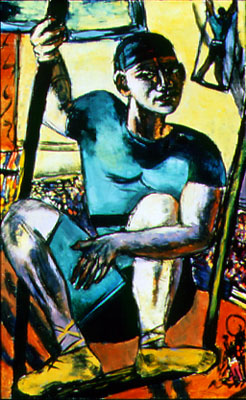Arts and Ideas in the Humanities A Residential College Major |
Major Requirements
Requirements for the major are grouped
into three categories:
|
John Singer Sargent Spanish Fountain, after 1902 Metropolitain Museum of Art, New York City |
I. History and Theory: Students work in two areas: (A) Historical Perspectives and (B) Issues of Modernity. They must take 2 courses in one area and 1 in the remaining area:
|
Max Beckmann Acrobat on the Trapeze, 1940 The Saint Louis Art Museum |
II. Visual Studies, Performance, and Studio Arts: Students select a total of 2 courses:
|

